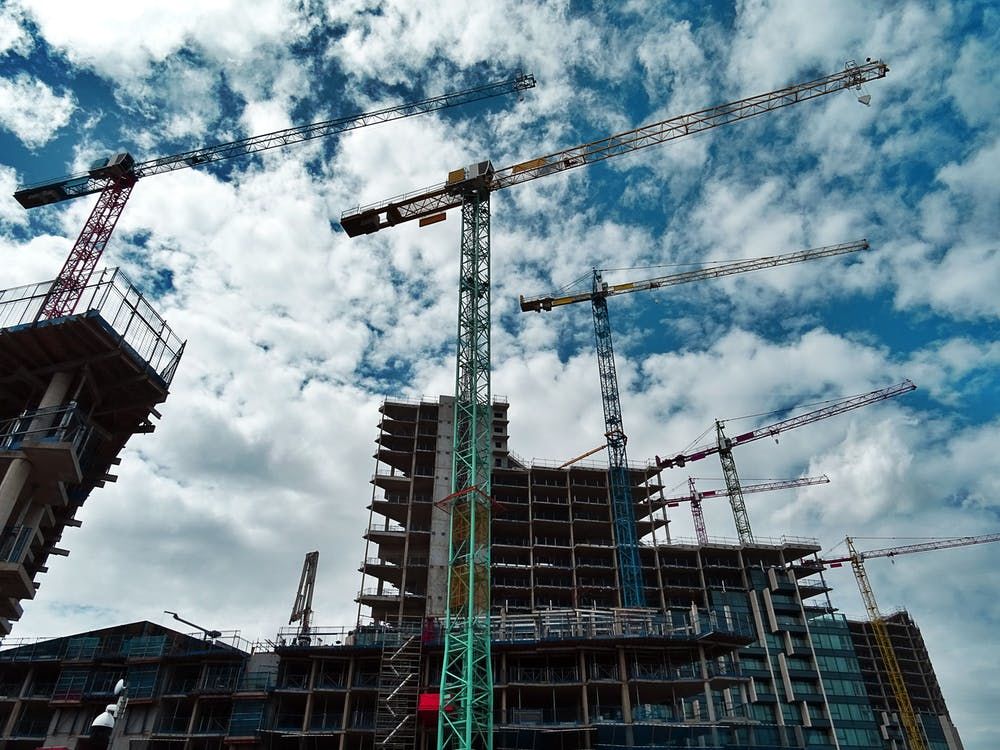Learning how to protect our infrastructure against natural disasters should be something deeply ingrained in Filipino construction. The Philippines is experienced in earthquakes, being part of the Pacific Ring of Fire, which is where the most volatile seismic activity on earth occurs due to the many areas where tectonic plates overlap.
One of the most dangerous effects of earthquakes is infrastructure collapse, which destroys not only the building and its contents. It also damages the surrounding areas, especially if it’s a larger structure. Because of that, there is a lot of engineering that goes into protecting a building from seismic activity. Here we lay down the basic elements that enable a building to stay resilient against quakes.
Use of light, flexible materials
Creating an earthquake-resistant structure starts with the choice of light and flexible materials. The key characteristic of these materials is that they are ductile, meaning they can withstand tension and deformation. Common ductile materials are wood, steel, and even bamboo. These materials let structures bend and move during a quake without breaking.
Bamboo – a natural building material that’s used for quake-proof house construction. Photo courtesy of Dezeen
Reinforcement of structure
Buildings need to literally brace themselves to be able to withstand a quake. That’s why architects and engineers make sure to reinforce concrete with steel. A strong concrete column must be supported by a lot of steel bars that are designed to keep a column steady during seismic movement. Typically, there would be extra steel at the top and bottom of columns to keep them secure. Steel bars are also locked in place by bending loops of 135 degrees instead of just aligning them. Too little steel reinforcement will result in a brittle column that is likely to collapse in a quake.
Graphic comparison on steel reinforcing bars. Photo courtesy of Rong-Gong Lin II, Rosanna Xia, and Doug Smith – latimesgraphics
For bigger buildings, large columns also help channel the swaying motion. A notable ancient earthquake-proofing design from Japan that also does something similar is the shinbashira, which is a giant central pillar found in the middle of tall structures. The shinbashira acts as a pendulum, and the model has been adapted by major buildings in Taiwan and New York as well.
Other additional reinforcement structures are shear walls, which are able to channel the swaying motions from seismic activity downward into the foundation to help absorb the energy.
Base isolation
The primary factor of earthquake-proofing buildings is to cushion the energy of side to side motions as much as possible, like a shock absorber. Another way to do this is by establishing flexible foundations.
A. Structure with no isolators in an earthquake. B. Structure with isolators. C. Structure with isolators in an earthquake. Diagram courtesy of ResearchGate
Designers of large infrastructures may decide to do base isolation, which is building an infrastructure on flexible pads that can sway with seismic activity. These pads are typically made with ductile materials like steel, rubber and lead. When a quake occurs, it is the base that will sway as the structure itself remains relatively still. As an added measure, these bases can also be equipped with seismic dampers which absorb the energy.
Force dampers
Force dampers are another way to make buildings flexible. These dampers cushion the oscillation of a building through friction, transforming the kinetic energy into heat which lets it dissolve. These dampers are typically placed diagonally between beams and columns throughout the levels of an infrastructure.
Seismic Dampers. Photo courtesy of Temblor.
Another piece of tech that dampens quakes is a tuned mass damper. These are essentially ball pendulums that are placed in the center of the building so that when seismic activity occurs, the ball sways in the opposite direction of the quake, which helps cancel out force. A prime example of this is Taiwan’s Taipei 101 tuned mass damper, which is the world’s largest and heaviest of its kind.
Taipei 101’s “Pendulum”, also known as the world’s largest Mass Damper. Photo courtesy of Atlas Obscura.
Self-check the sturdiness of your home
In the Philippines, there has long been a prediction of the “The Big One,” a major earthquake expected to be 7.2 magnitude hitting Metro Manila. With a fault line running from Bulacan to Laguna, it might potentially bring mass destruction if buildings are not ready to withstand it. Assess the integrity of your home using this self-checklist, which includes factors like the age and shape of your house, the thickness of its concrete, the grounding of your building and more.
Keeping communities safe from natural disasters is one of the primary missions of the construction industry. Even now, engineers and architects are constantly developing new designs and technology to keep buildings strong against quakes. After all, it isn’t earthquakes that potentially hurt people, it’s the buildings that do.
![]()










